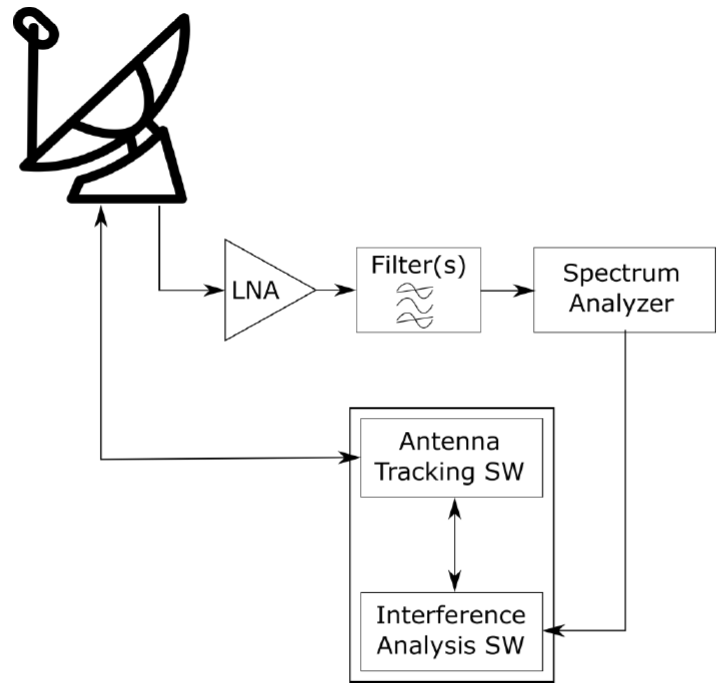
-
StatusOngoing
-
Status date2023-06-26
-
Activity Code6A.072
The objective of ESA NGSO-Sense projects is to develop a ground terminal prototype, as well as the measurement procedure, for detecting and identifying interference; and measuring Radio Frequency (RF) characteristics from a NGSO satellite network.
A number of private ventures envision a global network comprising a large number of NGSO satellites with the aim of providing ubiquitous broadband connectivity. The number of satellites being launched into space is dramatically increasing, which has raised some serious concerns among GSO satellite operators because such NGSO constellations will operate at the same frequencies that are currently used by GSO satellites (Ka and Ku bands).
International regulators have the difficult task to establish a fair and transparent competitive framework for all satellite broadband players while prioritising the socioeconomic growth. On the other hand, we have the satellite operators. First, the GSO operators, which see a threat in these NewSpace constellation due to the increase amount of interference that they will cause. Second, the NGSO operators, which need to understand when and for how much they may be inflicting the radio regulations and if they are being interfered by other NGSO systems.
the undergoing NGSO densification is leading to unprecedented inter-satellite coexistence challenges. The recent growing activities concerning the use of NGSO satellite constellations have propelled the regulatory environment towards adapting and extending their rules to ensure a safe and efficient deployment of NGSO operations, while protecting the legacy GSO operations.
To support all three stakeholders, i.e. regulators, GSO and NGSO operators, the NGSO-Sense project develops a ground terminal prototype, as well as the measurement procedure, for detecting and identifying interference, and extracting relevant information from the NGSO interference based on the collected measurements.
The high-level block diagram proposed by ESA for the NGSO-Sense prototype is illustrated in Fig 1. The prototype is composed of a ground terminal receiver able to work either on Ku or in Ka band, with a steerable tracking 1.2 dish antenna, and a SW block for processing the measured data and identify potential interference based on RF characteristics. The prototype is portable and includes a GUI for a straightforward user interface.

See above.
NGSO-Sense project kicked-off in December 2022 and it will run for 2 years. The project is divided into 6 technical work-packages (WP):
WP1: SOTA review and Technical Specifications
WP2: Technical Baseline
WP3: Detailed Design
WP4: Implementation and Verification Plan
WP5: Development and Evaluation
WP6: Technology Assessment and Development Plan
The project is on-going.



